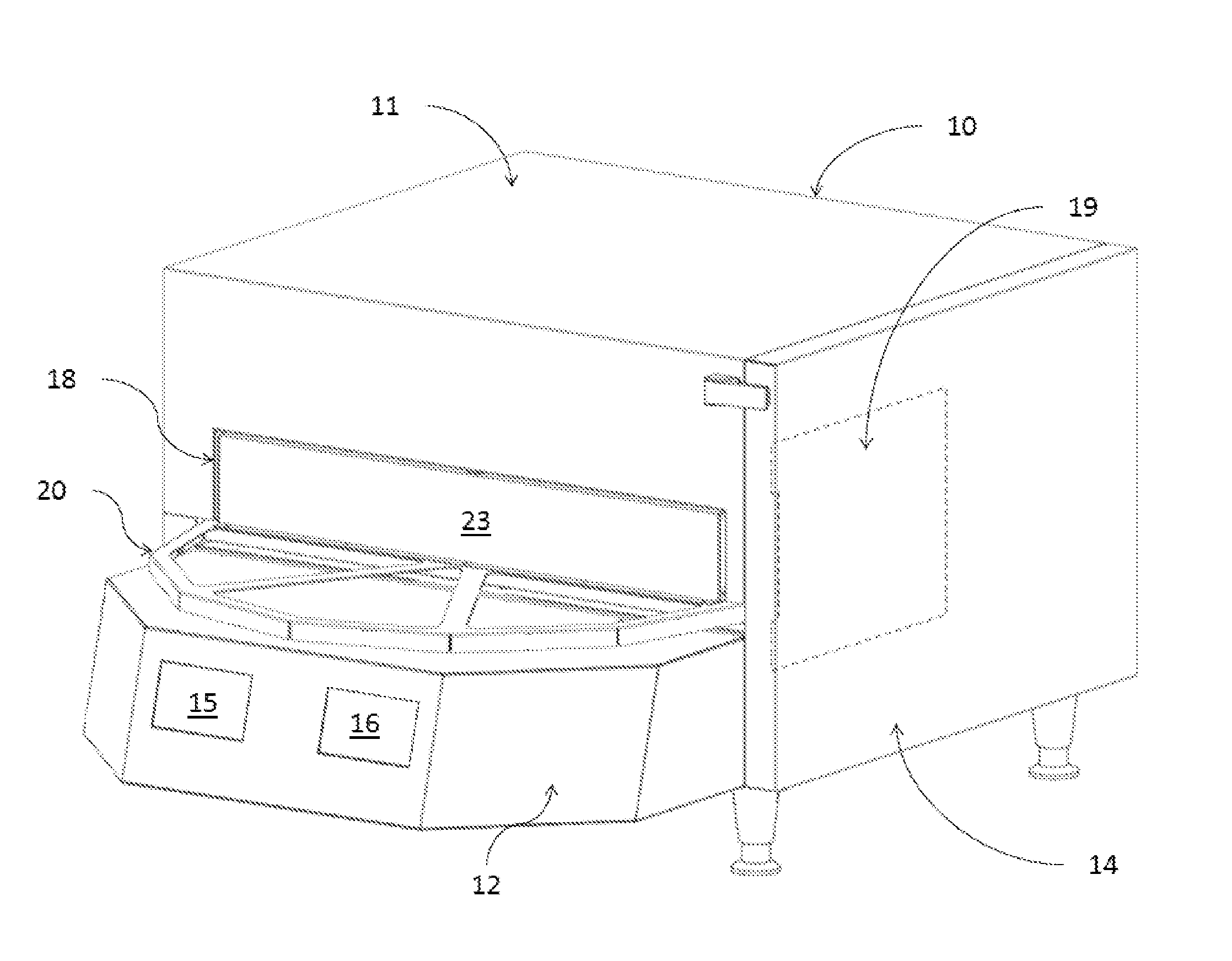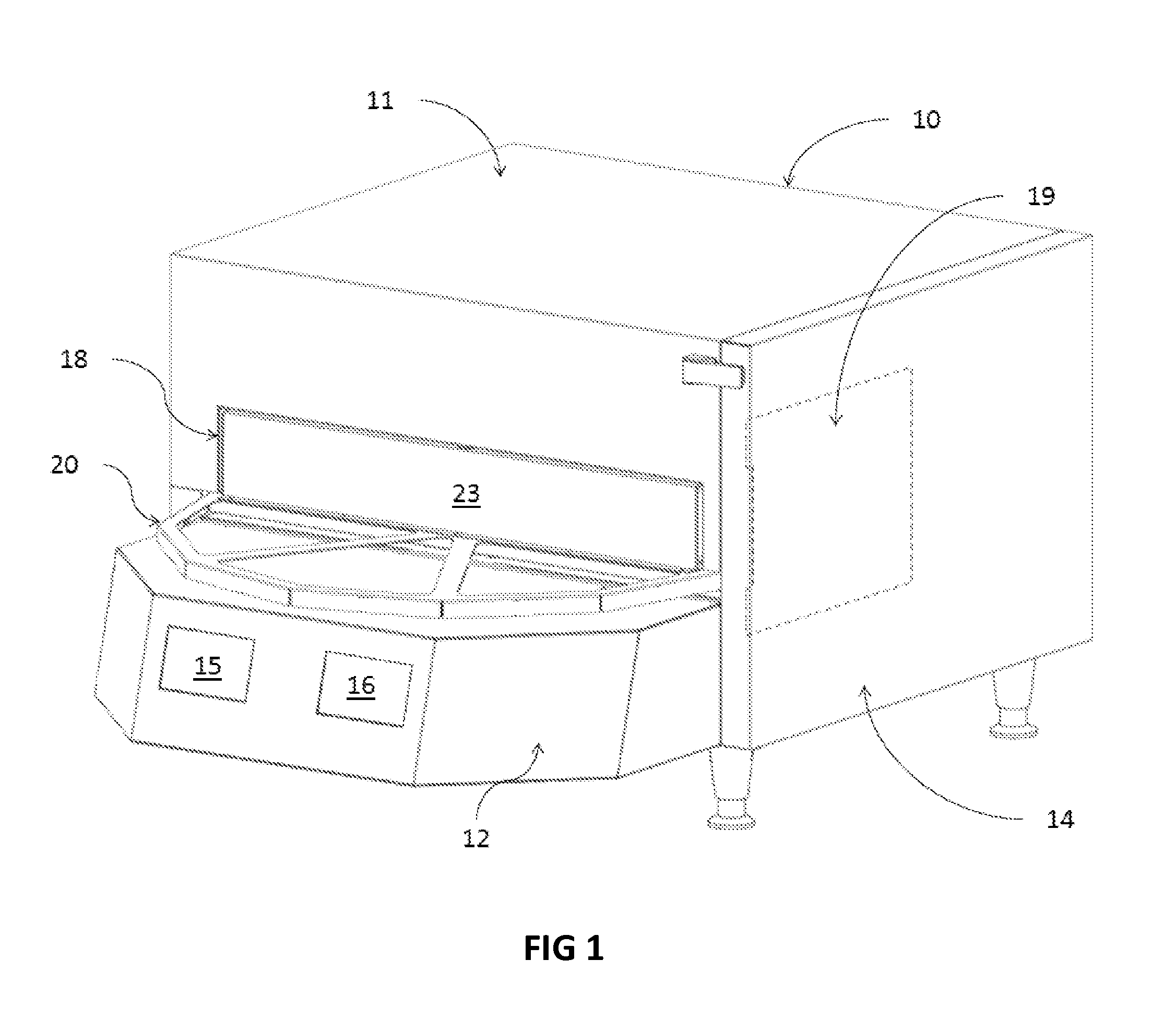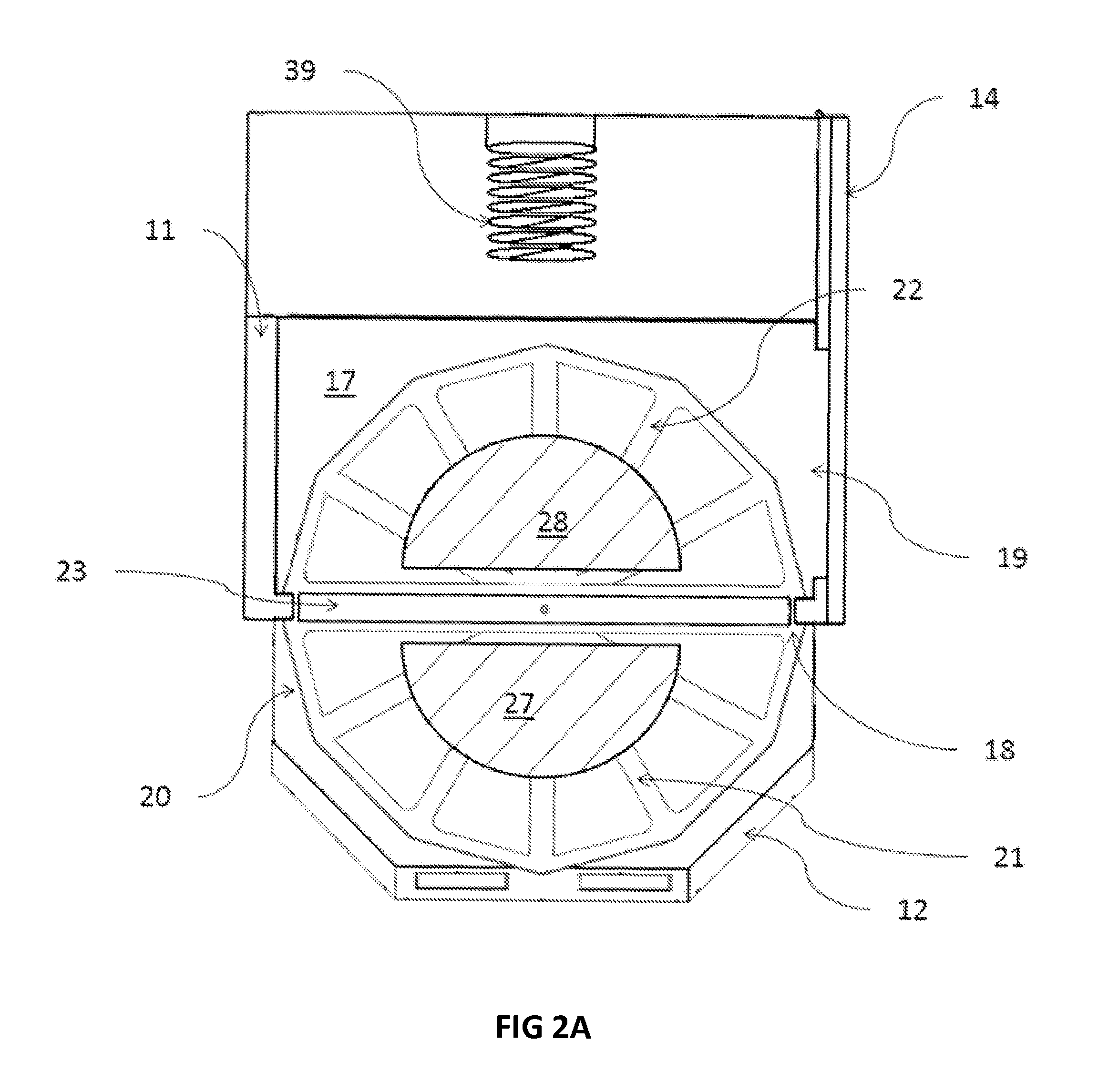Oven having a rotating door
a technology of rotating doors and ovens, which is applied in the field of ovens, can solve the problems of tremendous heat loss, conveyor ovens also have disadvantages, and limit the number of substantially identical food items placed in the ovens,
- Summary
- Abstract
- Description
- Claims
- Application Information
AI Technical Summary
Benefits of technology
Problems solved by technology
Method used
Image
Examples
Embodiment Construction
[0019]Referring now to the drawings and in particular to FIG. 1, there is depicted an isometric view of an oven, in accordance with a preferred embodiment of the present invention. As shown, an oven 10 includes a housing 11 and a base 12. Housing 11 includes a single front opening 18 for loading a food item into the oven. In addition, the housing 11 may also include a side opening 19 for maintenance purposes. During cooking operations, front opening 18 can be covered by a divider 23 located on a rotator 20, and side opening 19 can be covered by a side door 14.
[0020]Base 12 includes a first control panel 15 and a second control panel 16. First and second control panels 15, 16 may be implemented with touchscreens. They can also be implemented with keypads, liquid crystal displays (LCDs), and / or other means for entering cook settings. An operator can enter commands and / or cook setting parameters, such as cooking temperature, cooking time, blower speed, etc., via first and second contro...
PUM
 Login to View More
Login to View More Abstract
Description
Claims
Application Information
 Login to View More
Login to View More - R&D
- Intellectual Property
- Life Sciences
- Materials
- Tech Scout
- Unparalleled Data Quality
- Higher Quality Content
- 60% Fewer Hallucinations
Browse by: Latest US Patents, China's latest patents, Technical Efficacy Thesaurus, Application Domain, Technology Topic, Popular Technical Reports.
© 2025 PatSnap. All rights reserved.Legal|Privacy policy|Modern Slavery Act Transparency Statement|Sitemap|About US| Contact US: help@patsnap.com



